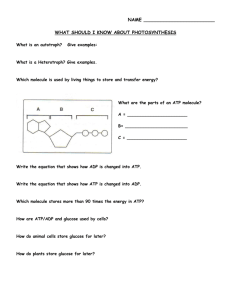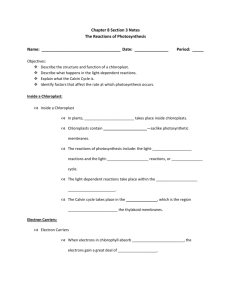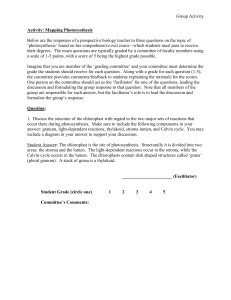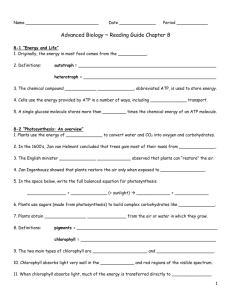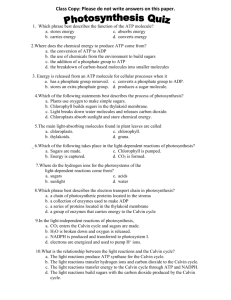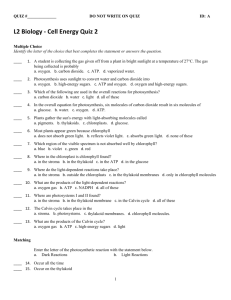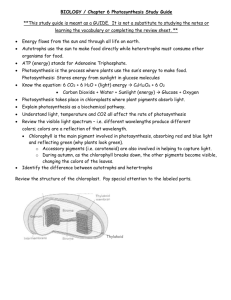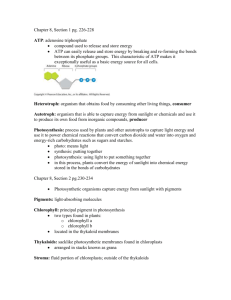Week 5 8-1 Energy and Life Pgs 201
advertisement
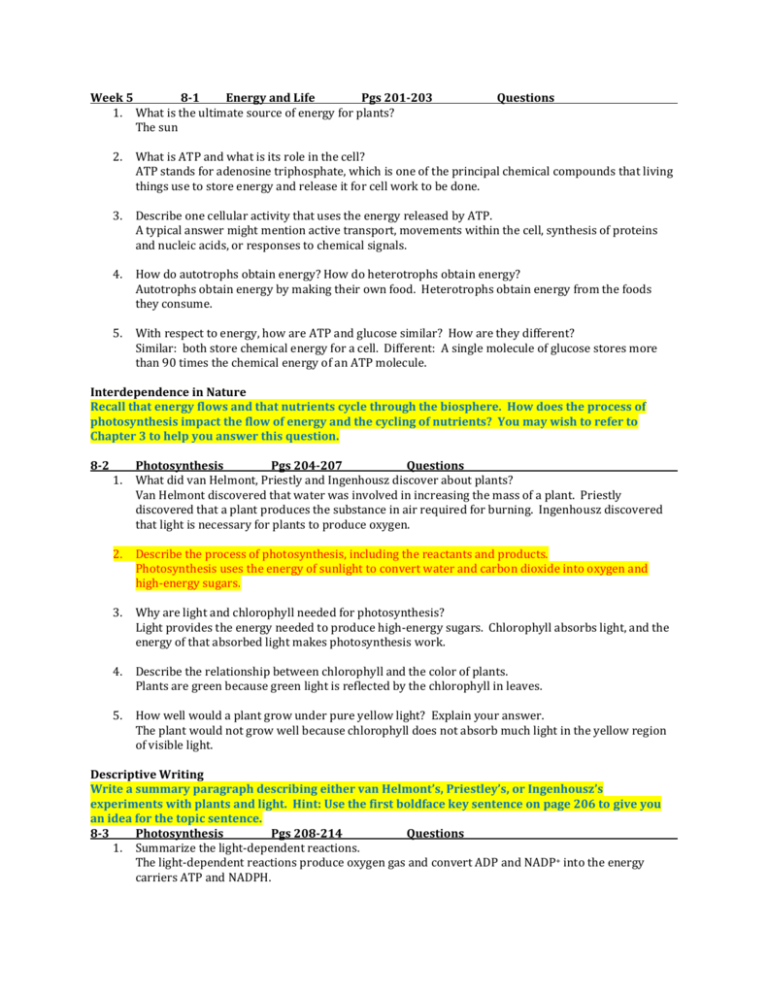
Week 5 8-1 Energy and Life Pgs 201-203 1. What is the ultimate source of energy for plants? The sun Questions 2. What is ATP and what is its role in the cell? ATP stands for adenosine triphosphate, which is one of the principal chemical compounds that living things use to store energy and release it for cell work to be done. 3. Describe one cellular activity that uses the energy released by ATP. A typical answer might mention active transport, movements within the cell, synthesis of proteins and nucleic acids, or responses to chemical signals. 4. How do autotrophs obtain energy? How do heterotrophs obtain energy? Autotrophs obtain energy by making their own food. Heterotrophs obtain energy from the foods they consume. 5. With respect to energy, how are ATP and glucose similar? How are they different? Similar: both store chemical energy for a cell. Different: A single molecule of glucose stores more than 90 times the chemical energy of an ATP molecule. Interdependence in Nature Recall that energy flows and that nutrients cycle through the biosphere. How does the process of photosynthesis impact the flow of energy and the cycling of nutrients? You may wish to refer to Chapter 3 to help you answer this question. 8-2 1. Photosynthesis Pgs 204-207 Questions What did van Helmont, Priestly and Ingenhousz discover about plants? Van Helmont discovered that water was involved in increasing the mass of a plant. Priestly discovered that a plant produces the substance in air required for burning. Ingenhousz discovered that light is necessary for plants to produce oxygen. 2. Describe the process of photosynthesis, including the reactants and products. Photosynthesis uses the energy of sunlight to convert water and carbon dioxide into oxygen and high-energy sugars. 3. Why are light and chlorophyll needed for photosynthesis? Light provides the energy needed to produce high-energy sugars. Chlorophyll absorbs light, and the energy of that absorbed light makes photosynthesis work. 4. Describe the relationship between chlorophyll and the color of plants. Plants are green because green light is reflected by the chlorophyll in leaves. 5. How well would a plant grow under pure yellow light? Explain your answer. The plant would not grow well because chlorophyll does not absorb much light in the yellow region of visible light. Descriptive Writing Write a summary paragraph describing either van Helmont’s, Priestley’s, or Ingenhousz’s experiments with plants and light. Hint: Use the first boldface key sentence on page 206 to give you an idea for the topic sentence. 8-3 Photosynthesis Pgs 208-214 Questions 1. Summarize the light-dependent reactions. The light-dependent reactions produce oxygen gas and convert ADP and NADP+ into the energy carriers ATP and NADPH. 2. What reactions make up the Calvin cycle? The Calvin cycle uses ATP and NADPH from the light-dependent reactions to produce high-energy sugars. 3. How is light energy converted into chemical energy during photosynthesis? Light energy is converted into chemical energy by the pigments in the chloroplast. 4. What is the function of NADPH? The main function of NADPH is to carry high-energy electrons produced by light absorption in chlorophyll to chemical reactions elsewhere in the cell. 5. Why are the light-dependent reactions important to the Calvin cycle? The light-dependent reactions provide the Calvin cycle with ATP and NADPH. The Calvin cycle uses the energy in ATP and NADPH to produce high-energy sugars. Making a Flowchart Construct a flowchart that illustrates the steps of photosynthesis. Begin with the energy of sunlight and end with the production of sugars. Include as much detail as possible in the numerous steps.
